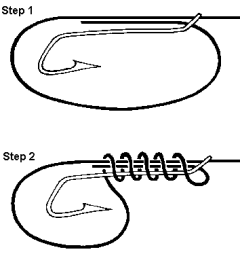
Spectra Fishing Line Facts
Spectra fibre woven into superbraid is the ultimate fishing line for both kite fishing and deepwater jigging for hapuku, bluenose and bass. Many people ask how strong are nylon fishing lines compared to spectra? Incredibly spectra is only around one third the diameter of nylon for the same breaking strain, an important fact to consider when selecting fishing line for deepwater fishing or kite angling.
For example, a kitefisher using a pocket sled or flexiwing fishing kite rig can get three times as much spectra line on their fishing reel and fish three times as far offshore.
When using spectra lines kite fishers using dropper rigs will reduce the work the kite has to do to tow the rig out and keep the line clear of the water by two thirds. This is because the superbraid has only one third of the windage and weight of conventional monofilament or dacron fishing lines. Light wind performance is greatly enhanced.
Spectra braid is also kinder to fishing reels as it only has a stretch factor of around 1% while nylon can have a stretch factor of up to 30% (even dacron fishing line has a 10% stretch factor). Spectra is often called no stretch fishing line, superline, super braid fishing line or spiderwire to reflect it’s small fishing line diameter to strength ratio and low stretch.
When using more conventional fishing methods, such as deepwater fishing from boats for bass, hapuka and bluenose or other deepwater species. Unlike nylon fishing lines, bites can easily be felt even at great depths because of the incredibly low stretch of spectra and its ability to transfer every detail of the bite instantly to the angler.
It also works the other way round, those jigging in very deep water can easily impart real action to the jig or lure even at depths down to 200 metres and beyond. Obviously when the angler strikes, the strike is instantly and positively transmitted to the point of the hook ensuring maximum penetration and fewer missed strikes.
Probably the biggest benefit to deepwater rod and reel fishers is the spectra physics that come into play. Because it is so thin for it’s breaking strain you will only need a third of the amount of lead weight to hold the bottom in deep water or strong currents compared to those who use nylon fishing lines.






































